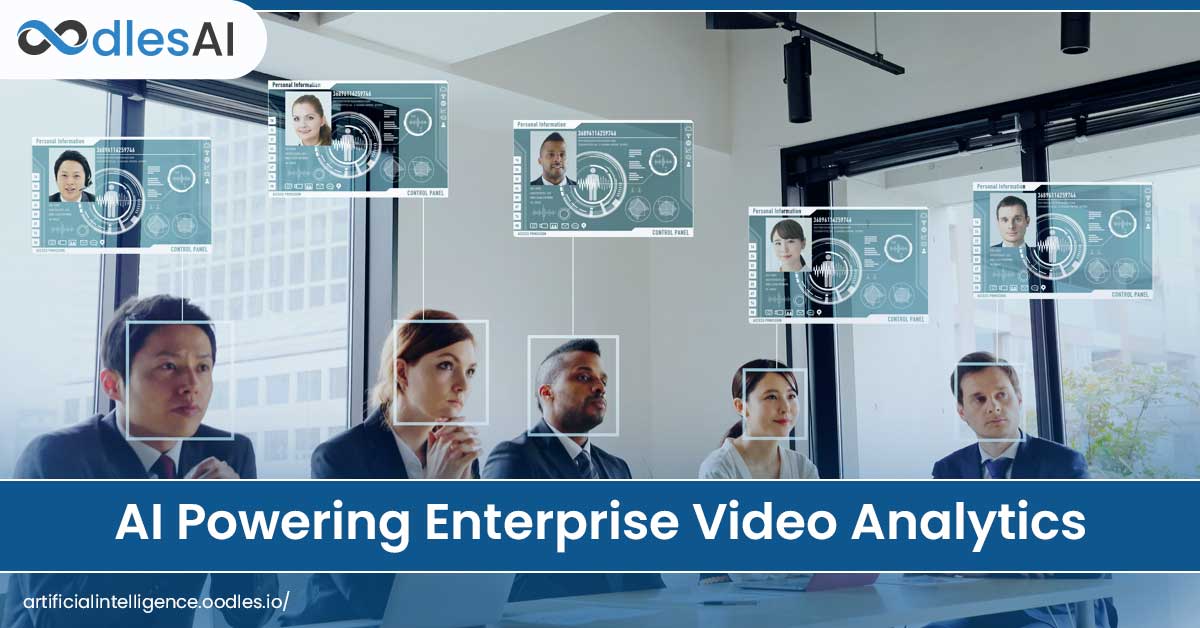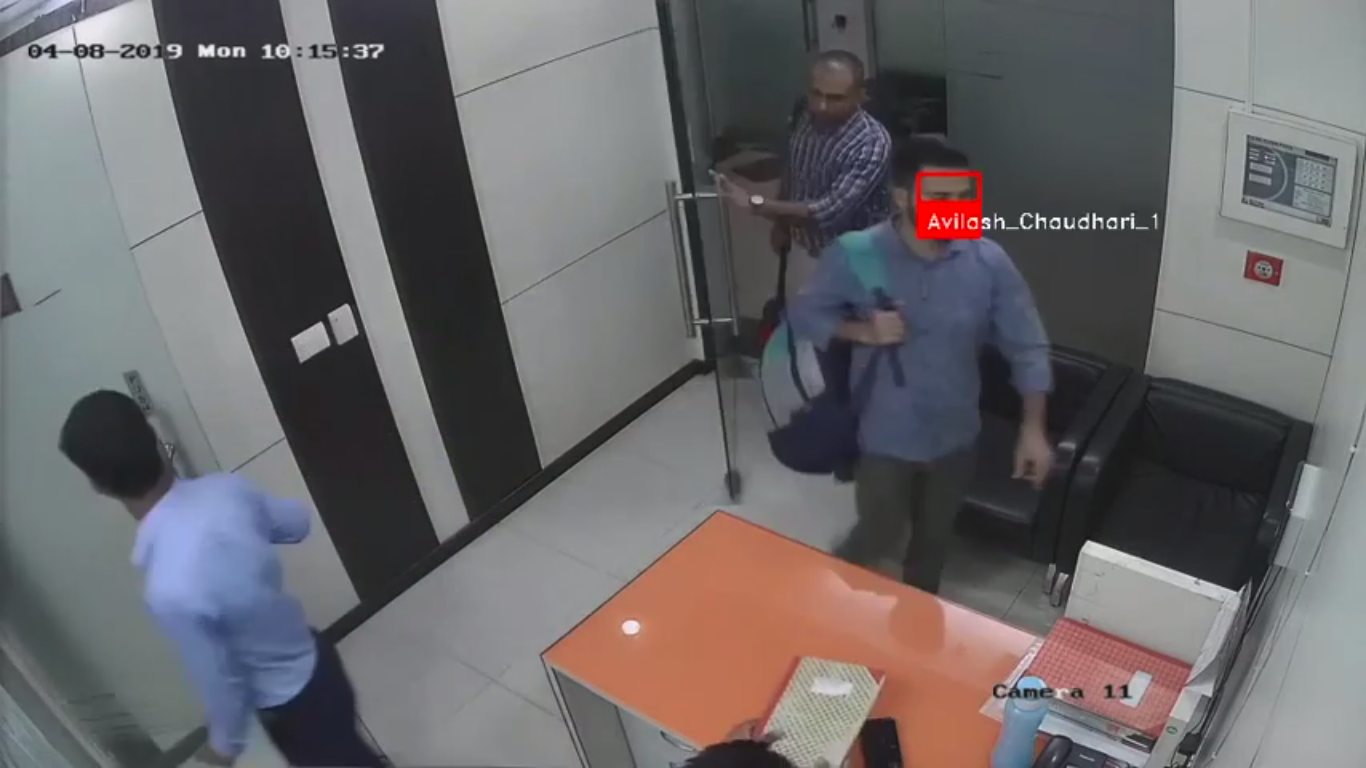AI for Video Analytics: Enterprise Applications and Opportunities
Sanam Malhotra | 21st April 2020

Our inability to process colossal amounts of video footage has left critical data unutilized. Artificial intelligence (AI) and machine learning (ML) are emerging as propelling factors of intelligence to generate value from video analytics. AI for video analytics is breaking through manufacturing units, supply chains, workplaces, and retail outlets to automate and reinforce critical operations. With extensive experience in deploying AI development services for video analytics, Oodles AI discusses how enterprises can deploy video analytics to scale operations across verticals.
How AI Enhances Video Analytics for Enterprises
With advancements in IoT devices and applications, channelizing data toward insight generation has become fairly uncomplicated. For video analytics, artificial intelligence and deep learning technologies are opening better opportunities for businesses to drive value without explicit programming. These models can be trained with high volumes of video footage to identify, classify, tag, and label specific objects automatically. The algorithmic powers of deep learning models enable businesses to-
a) Trigger AI for real-time video analytics
b) Channelize video feed into data systems
c) Add tags and metadata to identify video content
d) Extract actionable insights and analytics for rapid decision making
 Image Source- Researchgate
Image Source- Researchgate
Under deep learning, CNN or Convolutional Neural Network is the most commonly applied class of deep neural networks used for analyzing visual imagery. The process begins with the collection of prodigious amounts of video fro different input devices such as cameras, sensors, and IoT devices. The clustered data is now sent into data systems for refinement and structuring. It is followed by the main step where deep learning models trigger AI for video analytics to automate the following tasks-
1) Object Recognition and Classification
2) Behavior Analysis
3) Vehicle Licence Plate Recognition
4) Facial Recognition
5) Threat detection
Also read- Building and Deploying an AI-powered Image Caption Generator
Advanced Enterprise Applications of AI for Video Analytics
1) Employee Attendance Management
Resource management at large corporate setups is a challenging task. In the wake of technology-driven operations, companies are turning to more efficient and advanced solutions than traditional biometrics systems.
AI for video analytics is making remarkable strides in introducing facial recognition technology to routine employee attendance practices at workplaces. All you need is to train deep learning models with different angles of employee images. Resultantly, businesses can integrate the model with web administration systems to automate monitoring and tracking attendance accurately and effortlessly.

Oodles’ AI team recently built a CNN-based employee attendance model integrated with a front-desk video camera to monitor and track employee movements effectively.
Also read- Applications of Natural Language Processing (NLP) in Recruitment
2) Workplace Safety
The integration of advanced tools and technologies into business infrastructures is accompanied by an enormous risk of accidents and mismanagement. An International Labor Organization report reveals that workers counter 151 work-related accidents every 15 seconds worldwide.
To improve workplace safety and security, AI for video analytics is emerging as an effective and robust antithesis. With domain-specific training, deep learning models can identify and raise alarms for-
a) Flame or smoke detection
b) Short circuit detection
c) Unknown visitor capture at prohibited work areas
d) Safety equipment and accessory validation for on-field services, and
e) Anomaly detection at construction sites

An early flame detection in surveillance video systems is being demonstrated by the student members of IEEE Access.
Also read- Unlocking the Potential of Computer Vision for Manufacturing Businesses
3) Remote Inspection and Asset Monitoring
Considering the complexities of today’s manufacturing units and production facilities, manual efforts are turning redundant for analyzing operations at a granular level. The initiative of robotic process automation (RPA) was, therefore, imperative to the proper and efficient functioning of production companies.
Today, RPA has paved the way for artificial intelligence to streamline and accelerate existing business models and enhance customer satisfaction and experience exponentially. AI for video analytics at manufacturing units is capable of identifying and analyzing critical supply chain movements. Moreso, on-site drone videos and cameras can be remotely assessed to monitor the critical assets or threats to workers, equipment, vehicle, and locations.
Also read- Artificial Intelligence Applications using Google Video Intelligence API
Harnessing the Power of AI for Video Analytics with Oodles
In the run-up to build innovative solutions with emerging technologies, Oodles AI is deploying machine learning and deep learning capabilities across businesses. Our team is constantly exploring new opportunities at the enterprise level to embed artificial intelligence technologies for optimum performance. One of our functional deep learning models is a CNN-based employee attendance tracker that identifies employees in real-time video footage.

To automate, streamline and accelerate employee management, we build a real-time attendance tracking system using deep video analytics that renders the following statistics-
a) Total number of employees present each day
b) Total number of movements throughout the day
c) List of faces detected using webcam feed
In addition to deep video analytics, our offerings encompass natural language processing (NLP), recommendation engines, predictive analytics, and chatbot development services.
Reach out to our AI experts to learn more about our artificial intelligence capabilities.



